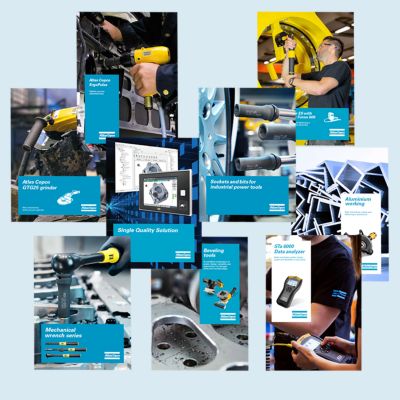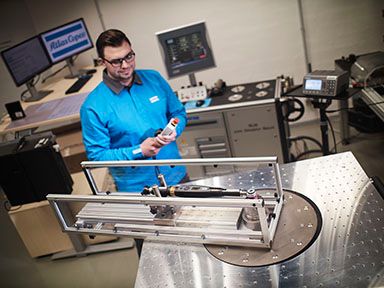In the evolving landscape of corporate sustainability, the concept of Scope 4 emissions is gaining prominence. Unlike Scope 1, 2, and 3 emissions, which focus on direct and indirect emissions within a company's value chain, Scope 4 encompasses the emissions avoided through the use of a company's products or services that replace higher-emission alternatives.
Despite being relatively new and having no universally accepted methodology for calculating or reporting Scope 4 emissions, the GHG Protocol and other frameworks are exploring ways to incorporate these emissions into broader climate strategies. Scope 4 as an innovative approach not only benefits the environment but also drives efficiency and cost savings for businesses.
Understanding Scope 4 emissions
Scope 4 emissions, often referred to as "avoided emissions," represent the reductions in greenhouse gas (GHG) emissions that occur outside a company's value chain due to the use of its products or services. For example, if a company produces energy-efficient equipment, the emissions avoided by using this equipment instead of a less efficient alternative are considered Scope 4. This concept extends the boundaries of carbon accounting, highlighting the broader positive impact of innovative products and services on the environment.
These reductions may arise from:
- Energy efficiency improvements in manufacturing processes or product designs
- Low-carbon technology adoption, such as renewable energy integration
- Circular economy initiatives, such as recycling, refurbishment, and reuse, to prevent emissions from new production
- Changes in consumer behavior, such as shifting towards greener transportation and sustainable consumption patterns
Why Scope 4 matters
Clearly, avoiding emissions has direct benefits for public health and our environment. Highlighting the avoided emissions also helps to accelerate the transition to a low-carbon economy where companies develop solutions and services that reduce emissions. This fosters innovation, which in its turn leads to more sustainable technologies and practices that benefit society as a whole. It also adds a proactive dimension to climate responsibility, highlighting how businesses can be part of the solution, not just the problem.
Beyond Scope 1, 2, and 3: Understanding avoided emissions
Consequently, avoiding emissions is a powerful corporate strategy that goes hand in hand with efficiency improvements and cost savings. Implementing Scope 4 initiatives can lead to:
- Higher Operational Efficiency: Optimizing infrastructure and reducing inefficiencies can lead to significant annual cost savings and lower emissions. This also means smoother operations and fewer disruptions.
- Cost Savings: Efficient operations reduce unnecessary costs associated with rework, scrap, and emergency repairs. This directly impacts the bottom line, making it a compelling business strategy.
- Competitive Advantage: By adopting innovative practices that reduce emissions, companies can position themselves as leaders in sustainability, attracting environmentally conscious clients and investors.
- Environmental Benefits: Companies also fulfill their commitment to sustainability and contribute to global decarbonization efforts through emissions reduction. This not only strengthens corporate reputation but also aligns with increasing regulatory requirements.
The challenges of Scope 4 accounting and why it is still worth it
While Scope 1, 2, and 3 emissions are clearly defined, there is no universally accepted methodology for calculating or reporting Scope 4 emissions yet. In addition, the determination will involve some level of assumption as the calculation is based on a hypothetical scenario of avoiding emissions. Thirdly, standardizing the impact can be a time-consuming process. For example, companies need to establish a baseline for comparison, which includes assessing the emissions that would have been generated.
Scope 4 is a strategic catalyst for innovation and sustainable development. By preventing emissions through innovative solutions and services, such as circularity flows, refurbishment and re-purposing of products, companies unlock opportunities for greener business models and technological advances.
That said, it’s crucial to stress that Scope 4 must not be aggregated with nor used to offset a company’s Scope 1, 2, or 3 emissions. These are fundamentally different dimensions of the carbon footprint: Scope 1, 2, and 3 reflect actual emissions generated within a company’s operations and across its value chain, while Scope 4 refers to the positive impact of avoided emissions. Mixing or subtracting Scope 4 from traditional scopes would blur the lines between accountability and contribution, undermining the integrity of carbon accounting.

Leading the way in emission avoidance
Atlas Copco provides a variety of services to help industries achieve Scope 4 emission reductions. Recognizing that positive sentiment alone isn't enough to justify investments, Atlas Copco has developed a CO2 calculator to illustrate the tangible benefits of these services. The calculator not only showcases the reduction in CO2 emissions but also highlights the financial advantages.
Among several services aimed at minimizing the environmental impact, the key offerings include:
- Preventive Maintenance Plans: Atlas Copco's ToolCover preventive maintenance plans ensure that equipment operates efficiently and lasts longer, reducing the need for new manufacturing and the associated emissions. For instance, the ToolCover Protect plan enabled a Japanese customer to achieve a 50% reduction in failure rates and cost savings.
- Energy Efficiency Improvements: By optimizing compressed air infrastructure and reducing air leaks, considerable cost and energy savings are likely. Studies indicate that 20% to 30% of the compressor output is lost due to leakages. Atlas Copco’s AirScan service helps businesses achieve significant savings.

- Waste and Scrap Reduction: EasyStart, Atlas Copco installation services, helps companies get things done right the first time, avoiding rework and scrap. This not only cuts costs but also reduces emissions associated with inefficient operations.
- Circularity Initiatives: Atlas Copco promotes the use of refurbished components. Equipment repairs utilizing refurbished spare parts reduce the need for new components, lowering the costs and minimizing the environmental footprint.
- Remote Services: In our interconnected world, remote support for hardware and software avoids unnecessary travel by technicians, reducing emissions and providing faster, more cost-effective solutions.
- Data-driven Services: Atlas Copco's ALTURE® platform uses advanced analytics and machine learning to optimize maintenance and improve production processes. By turning raw data into actionable insights, ALTURE® helps businesses enhance quality, maximize uptime, and reduce rework rates.
As a global company, Atlas Copco has responsibility to reduce our greenhouse gas emissions throughout the value chain. This video describes our climate commitments and how we are part of the transition to a low-carbon society.
Conclusion
While the concept of Scope 4 is slowly gaining traction, it represents an essential but still often overlooked component of corporate sustainability strategies. By focusing on emission avoidance, companies can drive innovation, create competitive advantages, and make significant contributions to global decarbonization efforts. Atlas Copco is committed to helping industries realize the full potential of emission reductions through its comprehensive service offerings. Embrace the future of emission avoidance with Atlas Copco and make a positive impact on both your operations and the environment.
Glossary: Terms that you should know
Scope 1 emissions
Scope 1 emissions are direct emissions from sources owned (or controlled) by a company. For example, these could include emissions from company facilities and company-owned vehicles.
Scope 2 emissions
Scope 2 emissions refer to indirect emissions associated with the generation of purchased energy like electricity, heating, or cooling used by a company.
Scope 3 emissions
Scope 3 emissions are other indirect emissions resulting from the entire life cycle of a product including the supply chain, transportation, and particularly the use phase of the final product.










